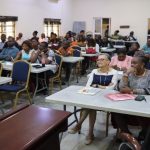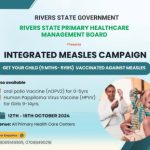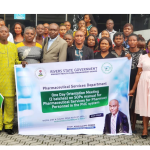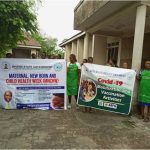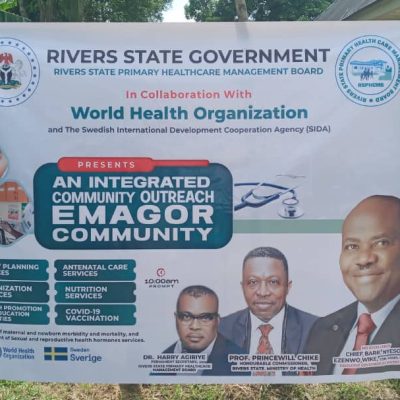Cervical cancer is the second most prevalent cancer among women in Nigeria, and other Low-and Middle-Income Countries (LMIC). More than 300,000 women die annually of cervical cancer globally. 90% of cervical cancer deaths occurring in LMICs. Inequitable distribution of cervical cancer in LMICs largely due to poor access to secondary prevention. Cervical cancer constitutes 17% of cancer in women. It is the second most prevalent cancer among women in Nigeria, and other Low-and Middle-Income Countries (LMIC) after breast. Over 90% of cervical cancer has detectable human papilloma virus (HPV) infection. It is the only cancer that has a detectable cause.
In 2017, the World Health Organization made a global call to eliminate cervical cancer as a public health problem by 2030
In Nigerian we have: Lack of awareness of the disease, inaccessibility due to high costs, poor quality of services, lack of guidelines for HPV testing, inadequately trained personnel for accurate diagnosis. Effective secondary prevention programs with screen and treat for pre-cancerous lesions offer the opportunity to eliminate cervical cancer as a public health problem.
CLINICAL BENEFITS OF ESTABLISHING A MORE ROBUST CERVICAL CANCER SECONDARY PREVENTION PROGRAM
Early screening and diagnosis will avert disability – adjusted life years and reduce cost associated with management of invasive cancers
With targeted investments by LMIC countries in cervical cancer prevention over the next 10 years, 5.2 million cervical cancer cases, 3.7 million deaths, and 21.8 million disability-adjusted life years would be averted.
Applying similar interventions within the state would decentralize care to the PHC and SHC level improving service delivery, reducing cost to clients and reducing client burden on tertiary facilities.
Societal benefits of a robust cervical cancer program include the preservation of women’s lives, healthier micro-and macro-systems, increased workforce, and a more productive state.
The high costs of invasive cancer management often lead to catastrophic out-of-pocket expenditure by affected families
Over 25% of families managing cervical cancer disease in Nigeria take on moderate to major loans to cover disease-related cost with major negative impacts on the family living conditions
Cervical cancer secondary prevention represents a unique public health opportunity to reduce the burden of disease among the 1.8m reproductive age women and enhance the social security of families in Rivers state
THE INTERVENTION
From mid-2020 to mid-2022, in response to the WHO call, UNITAID and CHAI in collaboration with three states including Rivers State are implemented a cervical cancer secondary prevention program which focuses on Screening & treatment: Screening with HPV and/or VIA, on-site treatment for eligible lesions, referral for LEEP for other precancerous lesions, referral for diagnosis of suspected cancer.
KEY ACTIVITIES AND INVESTMENTS
- Expanding access to HPV and VIA screening: Conducted trainings for 215 HCWs across PHCs (Doctors, nurses, CHEWs and RH supervisors) to facilitate high quality cervical cancer secondary prevention services.
- Activated 34 PHCs across 17 LGAs sites to screen and treat women for cervical cancer services using VIA and HPV. Facilitated step down training for 5 doctors across 4 LEEP sites to perform high quality colposcopy services for HPV screened positive women with high-risk sub types.
- Introduction of Thermal Ablation and LEEP treatment: Donated 68 thermal ablation, 68 Metal speculums, 4 LEEP and Colposcope devices. 3 tranches of consumables to jump start and support screen and treat services.
- Engaging CSOs and KOLs to generate demand for CxCa services: Engaged with state health educator, SMOs, RHs, SBCCTWG, Faith based organizations, CSOs, community structures like women groups, PPMVs, informal sectors to raise awareness and address barrier to uptake of cervical cancer services in addition to increasing cervical cancer demand generation activities.
- Scale robust patient management and tracking data systems: Engaged with state health educator, SMOs, RHs, SBCCTWG, Faith based organizations, CSOs, community structures like women groups, PPMVs, informal sectors to raise awareness and address barrier to uptake of cervical cancer services in addition to increasing cervical cancer demand generation activities.
- Scale robust patient management and tracking data systems: Trained HIOs and LGA M/E officers to strengthen capacities for data tracking and information management.
- Patient Navigators were trained and supported to track patients referred and document referral completion/non-completion for follow up.
KEY INDICATORS
Program target: 50,000 women of reproductive age.
Total number of women screened: 41,153. See table below
Number screened in PHCs: 28,974
CONTRIBUTION FROM THE STATE THROUGH RSPHCMB
- Identified and created cancer desk officers to provide oversight on cancer related services.
- Procured and distributed over 14,000 gynae-obstetric kits to 35 PHCs in 17 LGAs.
- Strengthen integration of cervical screen and treat into routine reproductive health services
- Strengthened routine screening for WLHIV
- Procured and distributed banners across 18 PHCs
- Secured RSPHCMB conference halls for meetings
- Integrated cervical cancer activities into MNCH activities
CHALLENGES
- Low uptake of cervical secondary prevention services due to limited integration into routine services
- Poor disease awareness and Demand Generation
- Limited HRH to provide high – quality cervical cancer screening and treatment
- Inadequate supply of consumables to support service provision (Secondary and tertiary facilities)
- Poor data visibility and data tacking systems
CONCLUSION
Missed opportunity: The large percentage of undiagnosed cervical disease demonstrates untapped diagnostic and missed opportunities in healthcare.
AWARENESS: Increasing awareness creation in the state will empower women to get screened improving both uptake and coverage.
CASE-FINDING: Equitable “screen and treat” services will increase access, case-finding and early intervention to safeguard women, who are a key contributor to the informal sector
COMMITMENT: Visible state leadership on DG combined with consistent availability of “screen & treat” commodities will strengthen HCW drive & commitment.
Dr Raymond E Alete
NCD DO.
DDCS, RSPHCMB


